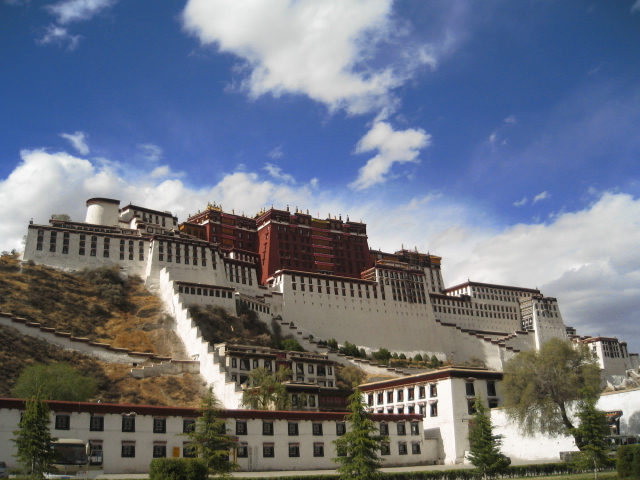|

|
|
Imposing Potala Palace is?the most famous tourist attraction in Lhasa, Tibet. |
The second-phase repair work on the Potala Palace, an iconic building in Lhasa, southwest China's Tibet Autonomous Region, is nearing completion, said an administrative official.
Champa Kelsang, chief of the administration for Potala Palace, said "some 150 million yuan (about 22.1 million U.S. dollars) has been spent on the second phase of the repairs of the Potala Palace. Also, the schedule has it that the repair work should be finished by the year end."
According to the official, the workers have nearly finished the following: reinforcement of sleeper walls -- a cylindrical structure used to support floor joists in the foundation of the main buildings of Potala Palace; renovation of 17 ancient buildings, including the "white palace" and the "red palace".
Problems found include mud erosion, stone peeling away, plus large area of cracks on the eight sleeper walls found between March and September in the foundation to the north and south of the "white palace".
The sleeper walls are also known as "dilong" in pinyin.
The Potala Palace, built on a hill, has an elevation of 3,763 meters. The exact number of sleeper walls with Potala Palace is unknown.
The first round repair of the Potala Palace began in 1989 and lasted five years, involving a total spending of 55 million yuan.
The central government of China has allocated 333 million yuan (about 48.97 million U.S. dollars) to repair Norbu Lingka and the Sakya Monastery in addition to the Potala Palace. Work began in 2002.
The Potala Palace, built in the 7th century, is on the world cultural heritage list. Norbu Lingka, which means "treasure park" in the Tibetan language, was the summer palace of the Dalai Lama. Sagya Monastery houses numerous classical books on Buddhism and precious paintings.
(Xinhua News Agency November 28, 2008)